Happy pub day to us! Today, Gardenista: The Low-Impact Garden finally hits bookstores! We can’t wait for you to crack it open and enjoy the contents. Whether you’re a new homeowner looking for landscape guidance or a seasoned gardener in search of fresh ideas, you’ll find a wealth of inspiration inside.
To celebrate the release, the book’s indefatigable author, Kendra Wilson, offers another sneak peek, this time sharing all the cool lawn-free front yard ideas she encountered while working on the book.
Front gardens, stoops, driveways, and parking courts have the potential to spread cheer, absorb storm water, and harbor insects and birds. When there’s a clear design rationale at work, other people on the street will want to get on board. Here are some of our favorite ways to have a front garden that is more than “low-maintenance” (though it can be that, too). All the ideas are from our new book, out today.
Photography by Caitlin Atkinson.
Grow a sponge garden.
Above: The Philadelphia front garden of Kayla Fell and Jeff Lorenz, of design and maintenance practice, Refugia.
Jeff and Kayla removed their front lawn during their first year living in their house in Pennsylvania. Stormwater that used to flow over their compacted grass into the basement is now soaked up by closely planted perennials with mixed root profiles, and an absorbent swamp cypress.
Balance sharpness with softness.
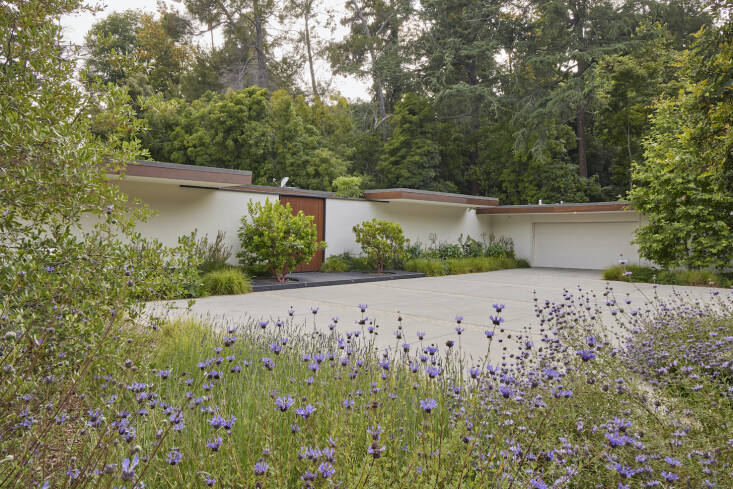 Above: A mid-century house in Pasadena, which saw a light landscape renovation in the hands of Samuel Webb and Kara Holekamp of design group Terremoto.
Above: A mid-century house in Pasadena, which saw a light landscape renovation in the hands of Samuel Webb and Kara Holekamp of design group Terremoto.
The sharp lines of this classic house are made even clearer, not from subtracting but by adding lively planting around the edges. This, in turn, is in dialogue with towering trees that seem to be held back by the immaculate walls. Loose symmetry on either side of the doorway adds more contrast, with a pair of Arbutus that refuse to be identical.
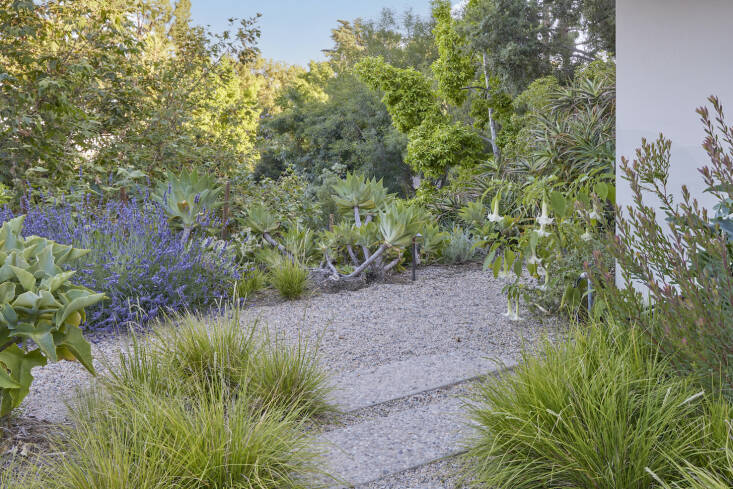 Above: The preexisting parking grid lets its hair down around the edges, with a generous perimeter of permeable gravel and plants with varied root systems that soak up rain.
Above: The preexisting parking grid lets its hair down around the edges, with a generous perimeter of permeable gravel and plants with varied root systems that soak up rain.
Re-wild the stoop.
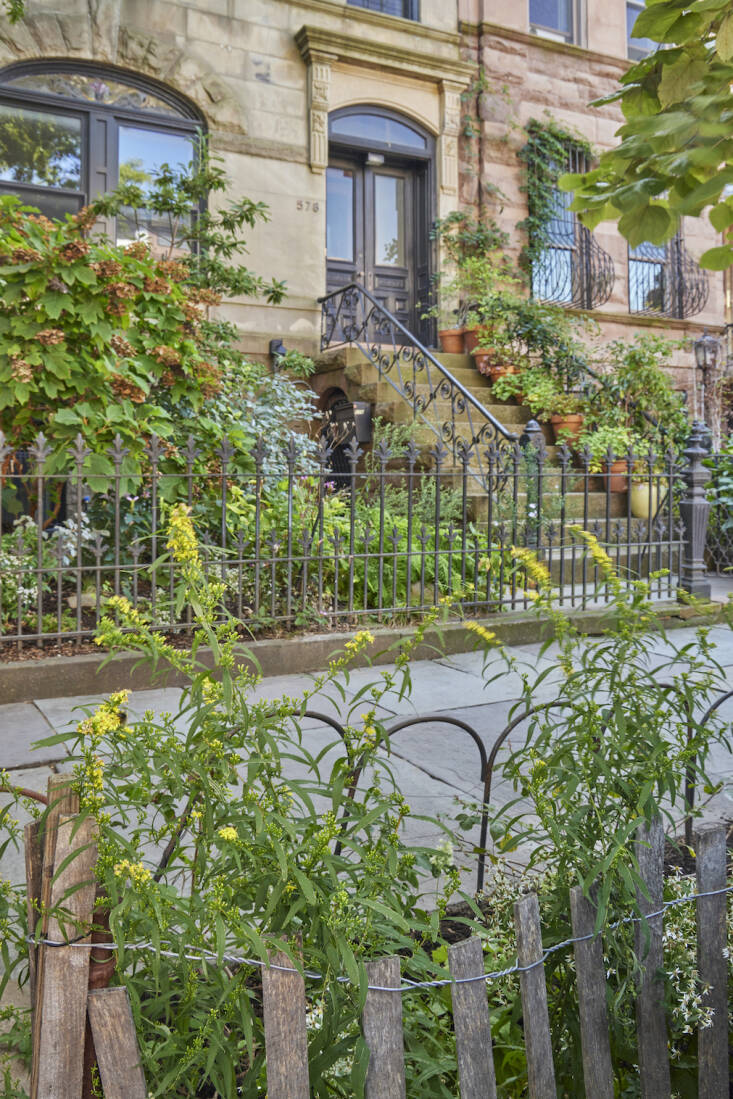 Above: A front stoop in Brooklyn, the former home of horticulturalist Rebecca McMackin and her arborist husband Chris Roddick.
Above: A front stoop in Brooklyn, the former home of horticulturalist Rebecca McMackin and her arborist husband Chris Roddick.
In pots on Rebecca’s stoop, long-lasting foliage of easygoing, northeastern perennials (Heuchera ‘Marmalade’ and Aquilegia canadensis) offers rest stops and shelter for small creatures. “Even in this tiny spot, it’s not hard to attract wildlife,” she says. And why let a tree pit go to waste? This one is fenced off with ad hoc railings and planted with tough natives that tolerate neglect as well as dogs. A sign directs dog owners’ attention to a couple of large rocks on the side, with the request, “Pee on me, not the tree.”
Say good-bye to mulch.
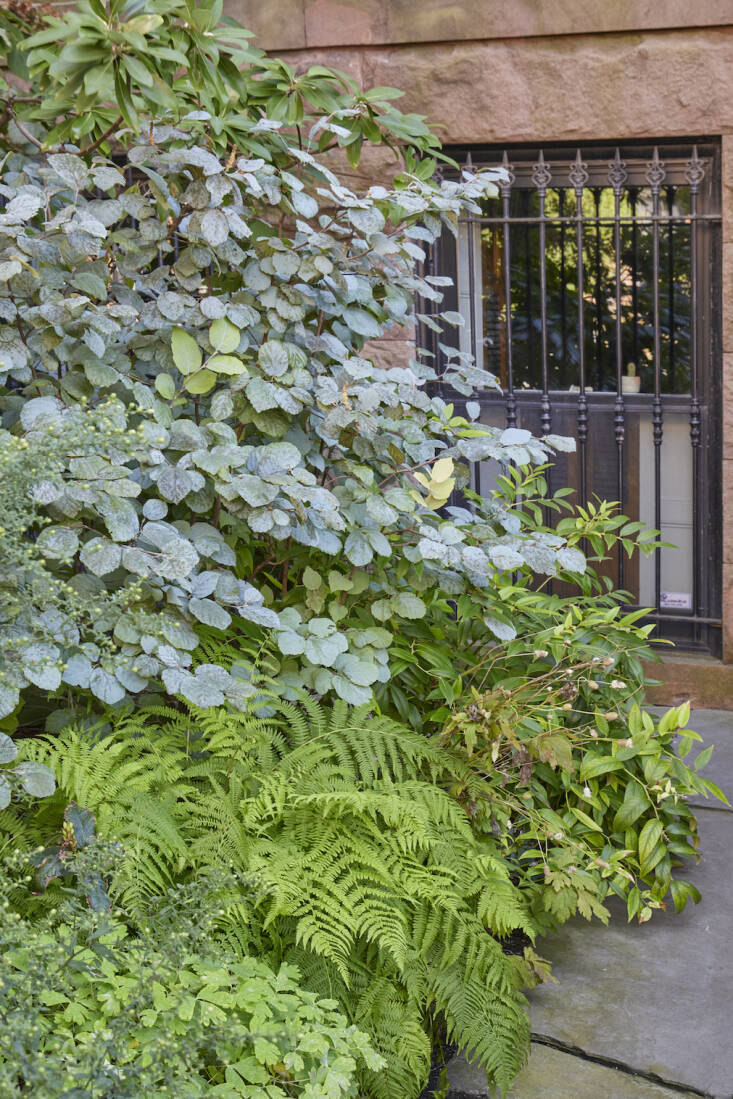 Above: With so much texture, green is never dull. Supported by trilllium, columbine, aster and ferns, the glaucous star is Fothergilla x intermedia ‘Blue Shadow’).
Above: With so much texture, green is never dull. Supported by trilllium, columbine, aster and ferns, the glaucous star is Fothergilla x intermedia ‘Blue Shadow’).
Rather than a desolate scene of straggly shrubs in bare earth, this basement view is of a mini Brooklyn forest. Layers of ground-covering plants, middle-story shrubs, and an airy magnolia make for an ecosystem that is self-cooling and sustaining. There is no need for mulch, dyed or otherwise, since the ground is protected from sun, and spent leaves feed the soil.
Bring in an eyecatcher.
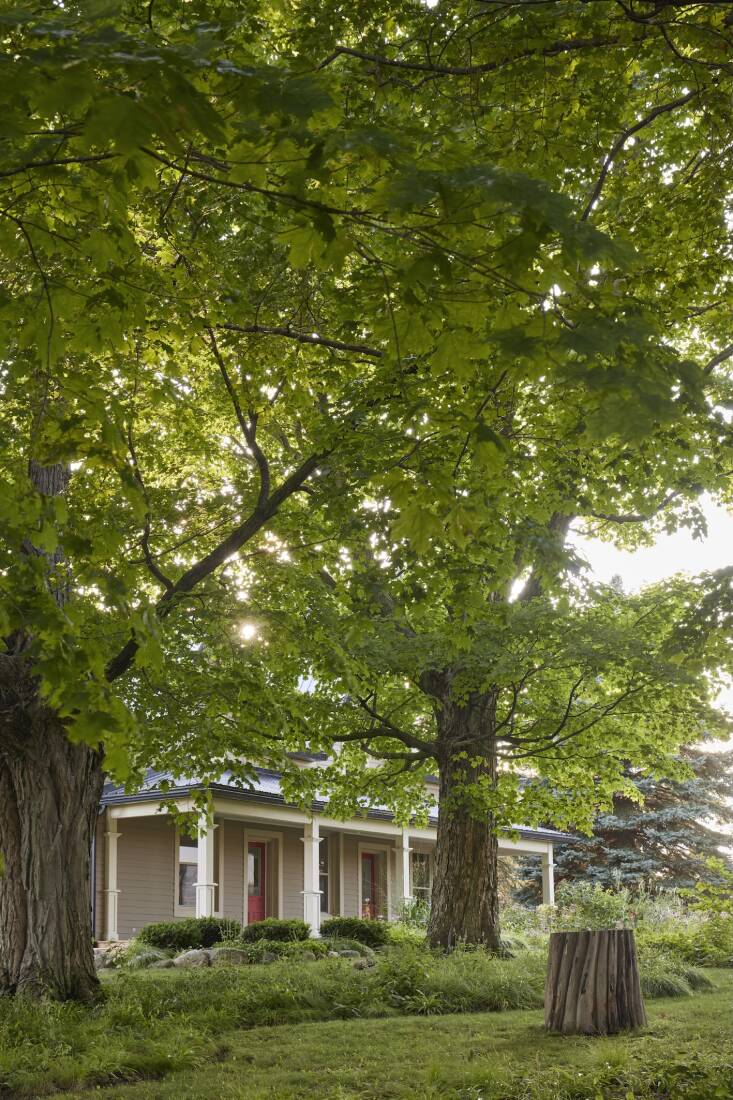 Above: This is not a tree stump. When local sculptor Colm McCool found the original piece of red oak in his firewood delivery, he decided to set it aside and carve into a piece of art that exaggerates its natural characteristics.
Above: This is not a tree stump. When local sculptor Colm McCool found the original piece of red oak in his firewood delivery, he decided to set it aside and carve into a piece of art that exaggerates its natural characteristics.
In Sarah Crawford’s farmhouse garden, well-chosen artifacts made from local materials are focal points in the greenery. The area in front of the house is looked after, with the help of plantsman and designer Ben O’Brien, as a woodland edge garden. Sarah likes art that is drawn from nature but is equally enthusiastic about the artistry of a stone wall, and commissioned a loosely circular one to outline this part of the garden. It’s a way of elevating the relaxed planting under tall maples, and distracting from the busy farmyard beyond.
Screen the car.
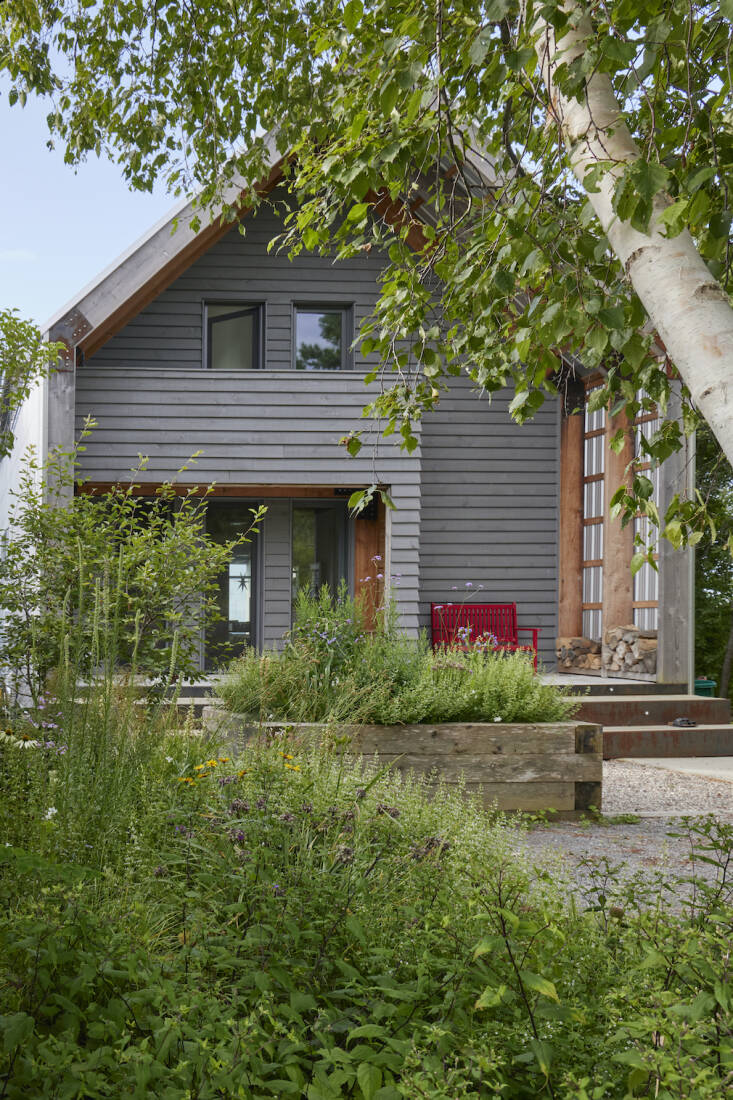 Above: A lakeside garden designed and maintained by Ben O’Brien of Ontario-based Wild by Design.
Above: A lakeside garden designed and maintained by Ben O’Brien of Ontario-based Wild by Design.
To reverse the distressing trend toward eliminating planting in favor of turning circles, consider how much space a car really needs. O’Brien worked out parking dimensions in this front garden by maneuvering his clients’ car and planting up the plentiful leftover space. A prime consideration is to steer attention away from the stationary vehicle; easily done with a raised bed showcasing resilient yet airy plants, such as Verbena bonariensis and prairie dropseed—shown here with a middle story of calamint, smooth aster and Allium ‘Millennium’. Edges are also addressed, with grasses (Sesleria autumnalis, Carex plantaginea), more calamint, goat’s beard, spiderwort, and hardy geranium in a meadow atmosphere. The silver birch was left in place, with a protective raised bed built around it, and is joined by serviceberry trees along the side. Birds are enticed into the driveway-garden, further enhancing the view from the porch.
Design considered storage.
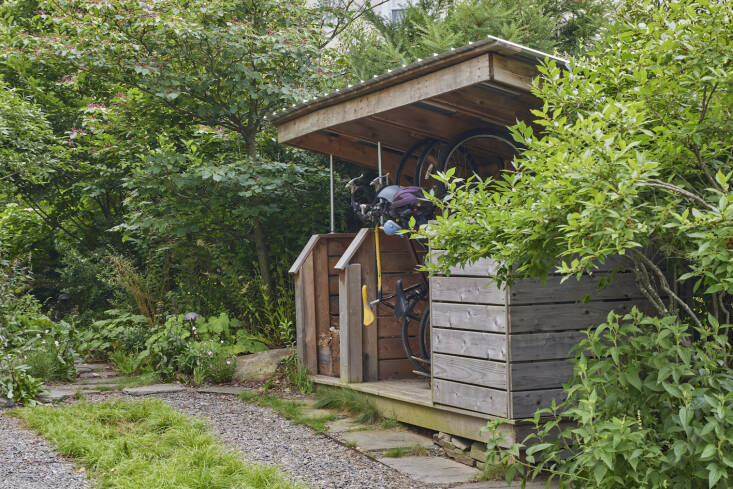 Above: The driveway of Kayla and Jeff from Refugia, as it merges into a path leading to the garden.
Above: The driveway of Kayla and Jeff from Refugia, as it merges into a path leading to the garden.
Storage can be lovely when it’s kept in proportion to the space. Here, it sits parallel to the parked car, which can come and go, without disturbing the no-mow, native red fescue, mixed with sedge, underneath. This is a highly functional outdoor space; the grass strip runs the length of the driveway, directing parking, while also attracting insects and providing habitat.
Repeat local stereotypes…
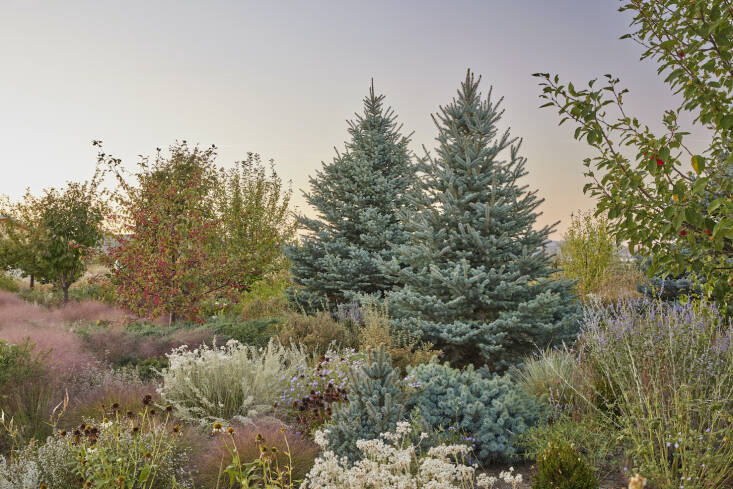 Above: The blue spruces and crab apples in garden designer and plantswoman Lauren Springer’s parking area are a common sight in traditional Colorado gardens.
Above: The blue spruces and crab apples in garden designer and plantswoman Lauren Springer’s parking area are a common sight in traditional Colorado gardens.
You don’t have to throw out the rule book; what works, works. “This is old-school Colorado,” says Lauren, “traditional, stalwart survivor plants cherished by the pioneers, and by me.”
…And local wildflowers.
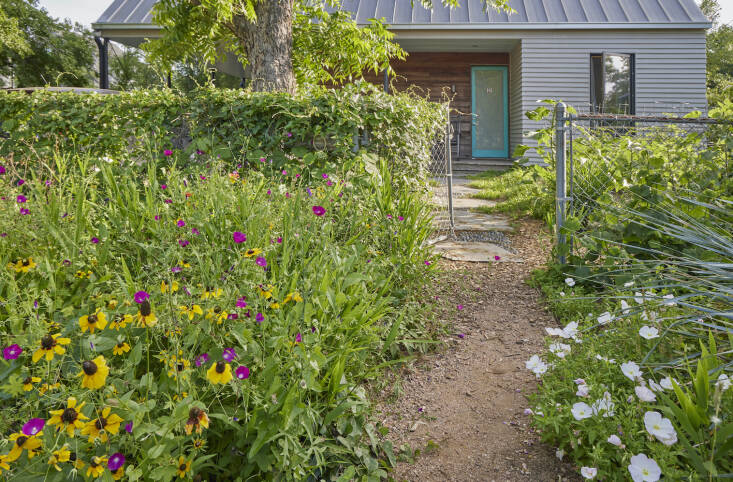 Above: The front yard of John Hart Asher’s family house in Austin, Texas, is filled with winecups, pink evening primrose, and coneflowers that naturally thrive in this region.
Above: The front yard of John Hart Asher’s family house in Austin, Texas, is filled with winecups, pink evening primrose, and coneflowers that naturally thrive in this region.
The wildflowers that mingle by the mailbox of this home in central Austin, where historical Blackland Prairie meets Hill Country, give a clue to what is going on behind the house. Both gardens, made by John Hart Asher of Blackland Collaborative, contain only plants that are native to this particular area. Choosing a diversity of plants is a way of bringing in more insect diversity above ground and microbe diversity below.
Keep half the lawn.
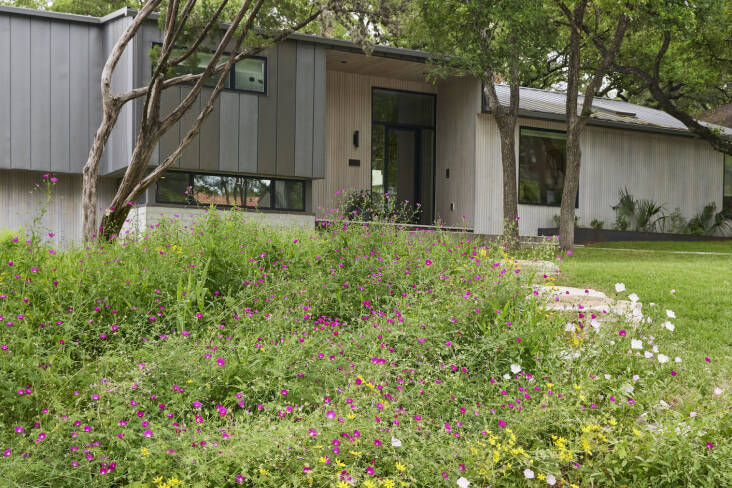 Above: A formal, yet wild front garden in Austin, Texas.
Above: A formal, yet wild front garden in Austin, Texas.
It’s perfectly possible for a front garden to offer a traditional welcome without banishing nature. In an Austin neighborhood, John Hart Asher persuaded his clients that as well as a neat lawn, they needed some wilderness—both within feet of one another. Alongside conventional turf, he installed a pocket prairie of native plants that wrap around the side of the house and are right at home among the Texas live oaks in the woods by the house.
For all of our coverage on our new book, head here.



